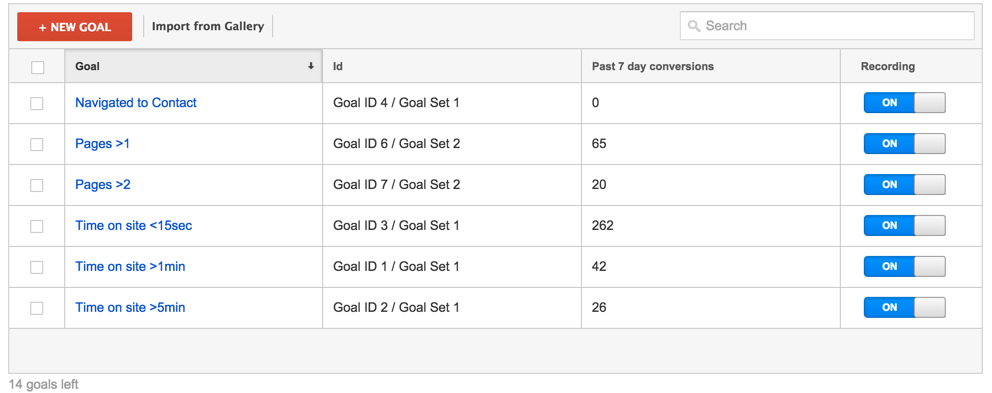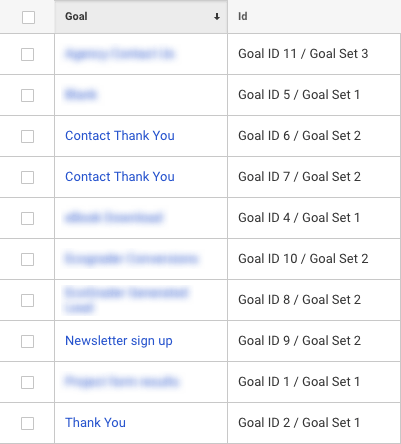What Data Is Google Analytics Goals Unable to Track: Discover the Limitations
Wiki Article
Discover the Limitations of Google Analytics Goals: Introducing the Data Types That Remain Untrackable
As services significantly rely on data-driven decision-making, comprehending the constraints of devices like Google Analytics comes to be critical. While Google Analytics Goals offer useful understandings right into customer communications, there exist information kinds that elude tracking, presenting obstacles to a comprehensive understanding of user behavior.Incomplete User Journey Tracking
Incomplete user journey tracking within Google Analytics can prevent the ability to accurately analyze customer behavior. When the user journey is not totally tracked, there are gaps in the data that avoid a thorough understanding of how customers communicate with an internet site. This lack of understanding can lead to missed out on possibilities for optimization and renovations to the individual experience.One typical issue with insufficient customer trip tracking is the inability to see the complete course that individuals take previously completing an objective or leaving the website. Without this information, it is challenging to recognize where individuals may be experiencing obstacles or rubbing factors that prevent them from transforming. Furthermore, incomplete monitoring can cover the impact of particular advertising and marketing initiatives or site changes on customer habits.
To address this constraint, it is critical to establish up appropriate tracking devices within Google Analytics to capture the whole customer journey. This may include establishing up event tracking, goal funnels, or utilizing devices like Google Tag Supervisor to make certain that no crucial interactions go unrecorded. By obtaining a thorough view of the customer journey, internet site owners can make even more informed choices to boost individual involvement and drive conversions.
Attribution Obstacles
Navigating with acknowledgment challenges in Google Analytics requires a complete understanding of how different touchpoints contribute to the overall conversion process. Attribution difficulties develop from the intricacy of modern-day consumer trips, where individuals connect with numerous networks prior to transforming.One common attribution challenge is the difficulty in attributing conversions to the right source, especially in cases where users interact with multiple networks prior to transforming. This can result in mistakes in identifying which marketing efforts are driving one of the most conversions. Furthermore, cross-device tracking poses another acknowledgment obstacle, as individuals commonly switch over between tools during their trip, making it testing to track their interactions effortlessly. Marketers have to meticulously interpret and assess attribution data to make enlightened decisions and maximize their advertising techniques properly.
Offline Conversions
Provided the obstacles connected with connecting conversions accurately in online networks, the dimension of offline conversions provides a substantial opportunity for marketing experts seeking a much more thorough understanding of their clients' trip. Offline conversions refer to activities that customers take in the real world, such as making purchases in brick-and-mortar stores or over the phone, participating in events, or engaging with printed products - what data is google analytics goals unable to track. These conversions are important for organizations that operate both online and offline, as they supply beneficial insights into the effectiveness of marketing campaigns throughout various touchpointsTracking offline conversions traditionally presented a substantial challenge for marketers, as it was challenging to connect these activities back to certain online interactions precisely. With developments in innovation, such as the combination of CRM systems, unique identifiers, and coupon codes, companies can now bridge the space in between online and offline information to gain an extra all natural sight of customer habits. By efficiently measuring offline conversions, marketing professionals can enhance their methods, allot resources much more efficiently, and inevitably improve the general customer experience.
Cross-Device Monitoring
Cross-device monitoring plays a vital function in understanding the interconnected nature of consumers' electronic communications throughout several gadgets. In today's omnichannel world, where users seamlessly change between tablets, desktop computers, and smartphones, tracking their habits throughout these devices is necessary for marketing experts to gain an extensive sight of their customer trip.
Moreover, personal privacy concerns and laws such as GDPR and CCPA have further complicated cross-device monitoring. With individuals requiring more control over their data and boosted restrictions on tracking innovations, marketing experts have to discover cutting-edge and privacy-compliant methods to connect individual communications across devices.
Dynamic Material Engagement
Understanding customer interaction see this here with dynamic material is critical in maximizing digital advertising strategies for enhanced audience communication. Dynamic material describes web site elements that change based upon individual behavior, preferences, or various other variables, providing a tailored experience. Tracking user communications with dynamic content presents difficulties for standard analytics devices like Google Analytics.While Google Analytics can track basic interactions like clicks and web page views, it may battle to capture more nuanced involvements within dynamic material. what data is google analytics goals unable to track. Metrics such as time invested in specific dynamic aspects, hover activities, or communications within pop-ups are frequently not quickly quantifiable utilizing typical tracking techniques. This restriction hinders online marketers' capability to completely realize how users are engaging with vibrant web content and site link tailor their approaches appropriately

Verdict
In verdict, Google Analytics goals have restrictions in tracking incomplete user trips, connecting conversions properly, recording offline conversions, tracking cross-device interactions, and gauging dynamic web content interaction. These constraints highlight the relevance of exploring additional monitoring methods and tools to obtain a much more comprehensive understanding of user actions and conversions beyond what Google Analytics can offer.While Google Analytics Goals offer valuable understandings right into customer communications, there exist data kinds that thwart monitoring, posturing obstacles to a detailed browse around this web-site understanding of user behavior.Incomplete customer trip monitoring within Google Analytics can prevent the capacity to accurately analyze customer behavior. When the individual journey is not fully tracked, there are spaces in the data that stop a comprehensive understanding of how customers engage with an internet site.One common problem with insufficient individual trip monitoring is the failure to see the complete course that individuals take in the past finishing a goal or leaving the site. By obtaining a thorough view of the user trip, website owners can make more informed decisions to enhance customer interaction and drive conversions.
Report this wiki page